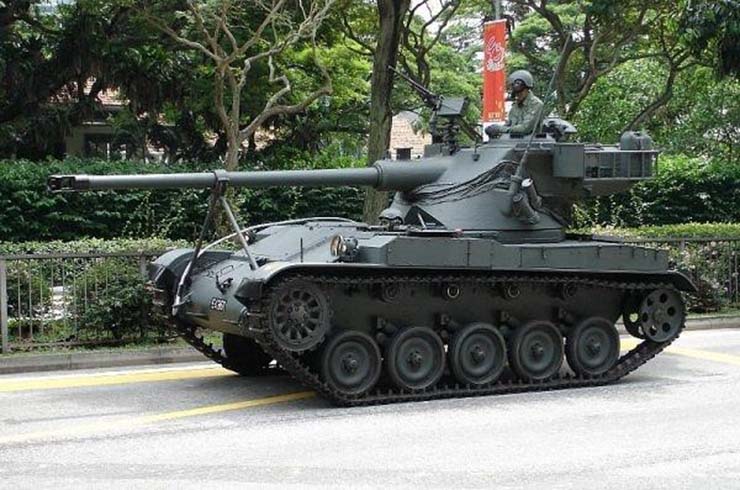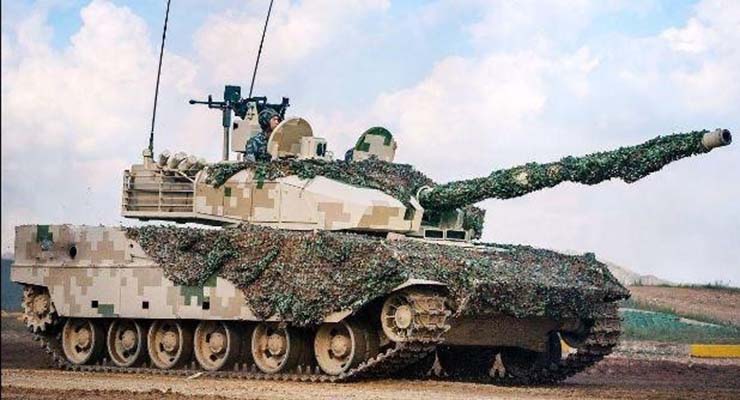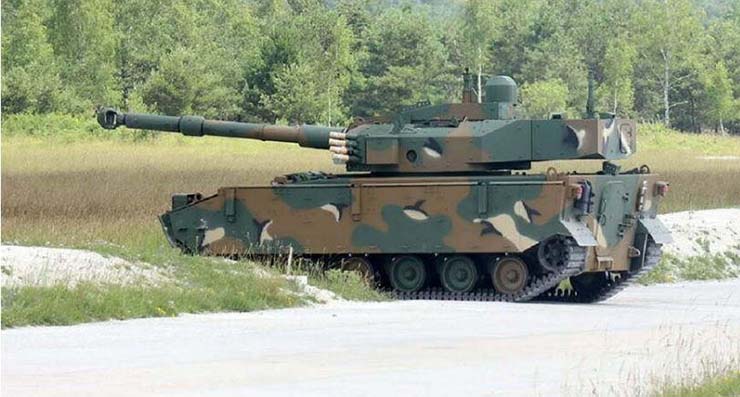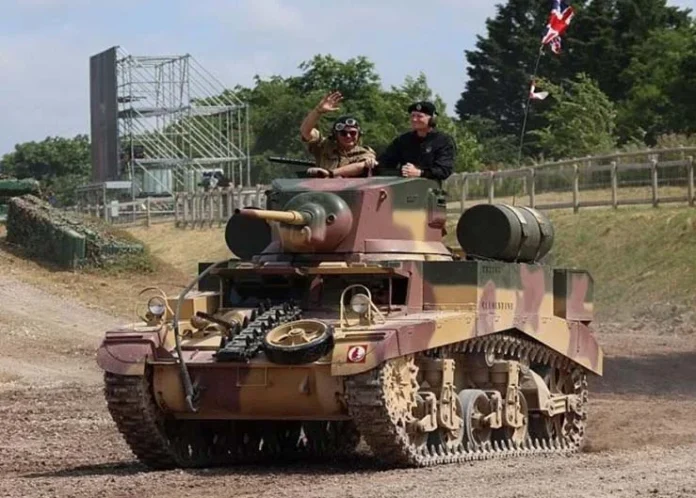Post Operation Juniper, which lasted for 73 days in June-August 2017 at the Doklam Plateau on India, Bhutan and Tibet tri-junction, the clash between the Chinese and Indian patrols again on 9 May 2020 at Naku La in North Sikkim, and Operation Snow Leopard deployment in 2020-21 in Moldo/Galwan sector in Eastern Ladakh, the Indian Army strongly felt the requirement of light tanks to strengthen its Ladakh corps, Sikkim corps and Gajraj corps to meet the Chinese threat.
During the 1962 War in the Trijap sub-sector (North Pangong Tso) and Rezang La areas and during the near-war situation in 2020 at Moldo/Galwan sub-sector, the Chinese mobilised its armoured and motorised formations. The tanks identified were Type 15 Black Panther (ZTQ-15) 3 Generation Light tanks in Demchok, Moldo area.
India responded with the induction of medium tanks (T 72 and T 90 tanks) in the Sikkim and Eastern Ladakh war zone. Medium tanks are ideal weapon systems for the plains and desert areas but are limited in high-altitude mountain areas due to a lack of oxygen. It was a remarkable feat by the Indian Air Force and the Indian Army to airlift 45 tonnes of medium tanks by Transport Giants IL76 and Globe Masters to the Ladakh frontier. The world was surprised by the presence of Indian armour in the Himalayas. The Red Army was taken aback and reduced its offensive activities and agreed to mutual withdrawal.
The Indian armour operating in high altitudes and mountains is not new. During the first Indo-Pakistan war in 1947-48, Operation Bison was launched in October 1948 under Srinagar Division commander Maj Gen KS Thimmaya to protect Kargil–Dras and link up with Leh garrison. The 77 Para Brigade led by Stuart light tanks of 7 Cavalry commanded by Lt Col Rajinder Singh Shergill (Sparrow) broke through the Zoji La Pass of snow blizzards. The enemy could not believe it and abandoned the strong Points and hundreds of raiders were killed and many surrendered. The 77 Brigade cleared Ghumri and Dras with the support of tanks and reinforced the isolated Leh. Stuart M5 tanks of 7 Cavalry were of USA origin light tanks manufactured by the Cadillac division of General Motors. The weight of the tank was 15.50 tonnes and had 4 men crew. The main gun was 37mm M6 and also had 3 x .30 calibre machine guns. This was the first light tank in India. It became obsolete by 1960.
During the 1962 Sino-Indian War, the Chinese attacked the forward Indian posts at Daulat Beg Oldie (DBO), Depsang Plains, Galwan Valley, Gogra, Hot Spring, SiriJap in Phase 1 and, South of Pangong Tso, Magar Hill. Gurung hill, Rezang La, Demchok in Phase 2. The Trishul Division was raised to protect Leh in mid-Oct 1962. The entire area was initially the responsibility of the 114 Infantry brigade commanded by Brig T N Raina and it had 7 JAK Militia and 5 JAT covering north of Pangong Tso to Karakoram pass and 1/8 GR, 13 Kumaon, later 1 Jat in the southern sector.

There was a heavy concentration of tanks behind the Spanngur gap, the Chinese had used tanks on the northern bank of Pangong Tso to attack Major Dhan Singh’s company locality on 21 Oct 62. To counter the armour threat to Leh, six AMX 13 tanks of 20 Lancers were airlifted by AN 12 Transport Aircraft to the Chushul Airstrip on 25 Oct 62 and reinforced the sector. Capt A K Dewan was the armour troop leader.
Another historical feat and the presence of tanks at Chushul saved the day. AMX 13 tank was of French origin. Two regiments were equipped with it 8 Cav and 20 Lancers. The weight of the tank was 13.5 tonnes and had a 75 mm main gun and 2 x 7.62 mm machine guns as secondary armament. These light tanks were airlifted by AN 12s and deployed in the Chushul sector in Eastern Ladakh War Zone and deterred Chinese armoured formations to venture towards Chushul Air Field during the Sino-India War of 1962.
During the 1965 Indo-Pak War, 20 Lancers with AMX 13 were deployed in Chamb salient. They stalled the Pak offensive for a day but Patton M 47 tanks finally destroyed most of these tanks in direct engagements. During the tank battle of Bhikkiwind, 8 Cavalry also had AMX 13 tanks but they were not directly involved with tank v/s tank battle with Pak 1 Armoured division equipped with Patton M 48 heavy tanks. AMX 13 evenly matched with M 24 Chaffee light tanks in a few instances.
India acquired 200 Centurion Mk 7 tanks from Great Britain after the debacle of 1962. The 4 Armoured Regiments were equipped with Centurion 55-tonne tanks, which formed the punch of the 1 Armoured Division. Centurions broke the spine of Pakistan’s armoured formations equipped with US-made super Patton M 47/48 tanks.
India also procured 100 Russian light amphibian PT 76 tanks and two regiments (45 Cav and 69 AR) were equipped with this new equipment. PT 76 were procured with an eye on operations in the riverine terrain of East Pakistan. PT 76 was a light tank that weighed 14 tonnes and fully loaded 18 tonnes. The main armament was a smooth bore 76 mm main gun and 1x 7.62 mm Coaxial Machine Gun. It had a speed of 44 Km/hour and 11 Knots in River/Sea. It could carry 40 rounds of High Explosive Anti Tank/ Armour Piercing type of ammunition. The cruising range fully topped up was 290 km on the road/90 nautical miles in water. These tanks played a crucial role in Eastern theatre in the 1971 Bangladesh Liberation War. PT 76 was phased out by the 1990s.
Therefore, from 1990 to 2023, Indian Armour only had medium tanks like T 54, T 55, Vijayanta, T 72 and T 90s. Two regiments are equipped with Indigenous Arjun Mk 1 Main battle tanks. After the clash at Galwan and the aggressive attitude of China in 2020, India felt the necessity of light tanks with high calibre guns, which could be airlifted to the high-altitude war zones of Ladakh and Arunachal Pradesh and operate in mountainous terrain rapidly with agility.
Although the Medium Armoured Regiments and Mechanised Battalion had already reached Ladakh and Sikkim, still light tanks were required. BMP 1/2 of Mechanised Battalions had been deployed but neither had Armour thickness nor adequate high Calibre Armament to face Chinese tanks. DRDO Project of the Light tank also was closed down in 2019 not meeting GSQR specifications and indifference of the users.

The Line of Actual Control (LAC) had generally remained quiet since the 1962 War except for Nathu La clashes in 1967 but the Chinese deployment increased multifold in 2020 and the Chinese patrols intruded into the common Buffer Zone of LAC and violated various patrolling points. As Indian Army retaliated, they withdrew but at the Galwan river bed they had heavy deployment threatening the Shyok-Galwan Junction bridge, they appeared again and again and pitched tents at patrolling limit. Enemy tanks were seen in the Spanngur gap and Moldo region. Almost every month, the India-China corps commander-level talks were held but heavy Chinese deployment continued.
The Chinese tanks operating there were identified as Type 15 nicknamed Black Panther. It was first inducted into service in 2018. The Type 15 has been in service with the People Liberation Army, Airborne Corps and PLA Navy Marine Corps. This new tank has replaced the earlier Type 62 light tank, which has become obsolete in 2015. Type 15 is equipped with a 105 mm Rifled Main Gun with an autoloader and storage of 38 rounds. It also has a 12.7 coaxial machine gun and auto grenade launcher platform also. The Diesel Engine fitted is 8V132 which has 1000 horsepower with automatic transmission. The maximum speed it can achieve is 70 kmph and the cruising range is 469 km. The weight is 33 tonnes and has a crew of three men. It has Explosive Reactive Armour. Presently, 500 Nos have been produced. Most of the Light Armoured composite Battalions in Western Theatre have been allotted these tanks.
The appearance of light Chinese tanks on LAC was a cause of concern and thus, the requirement of light tanks was felt on operation immediately. The first option was to import a light tank off the shelf from Russia or another friendly country. Russian light tank Spurt-SDM1 was selected in 2020. It had a 125 mm SB main gun and 1x PKT 7.62mm machine gun. The total weight is 18 tonnes and the operating range of 500 km. It can move at a speed of 45kmph across the country and 10 km/h in water. It can be para-dropped from IL 76 along with airborne troops. Due to Ukraine War, the deal was cancelled.

DRDO was activated again and Larsen and Toubro was incorporated. The project of the light tank was christened ‘Zorawar’, named after the famous daring Dogra General who conquered Gilgit and Baltistan in 1841 and reached Kailash Mansarovar in Tibet. DRDO and Larsen and Tourbo have already designed the tank. It is based on the Chassis of K 9 Vajra self-propelled Arty 155 mm (of which 100 units are already inducted). Few prototypes were undergoing intensive trials. The project was approved under Make in India initiative by the defence acquisition council (DAP-2020). A prototype was exhibited at Defence Expo 2022.
The main specifications of Zorawar are as listed; the main gun is 105 mm Rifled capable of firing APDS and HESH ammunition with a coaxial machine gun and adequate armour protection. The main issue was the weight, which was exceeding 30 tonnes. As per the new GSQR, the weight is not to exceed 25 tonnes. The new prototypes are now under 25 tonnes, hence there was a delay in the project.
The most important QR was that it has to be amphibian and air-portable by IL76/C 17. The tank will have 3 men crew (commander, gunner and driver). There will be a quadcopter drone available to the tank commander for a deep search ahead Loitering Ammunition will also be available in the tank. It will be equipped with oxygenators for crews and also for engine quick start. The trials should be completed by late 2023. It is initially planned to build 50 tanks in the first phase and followed by another 250 more in the second phase. It is expected to be ready by mid-2024, Zorawar, the first indigenous light tank will be operating across Indus in Eastern Ladakh, across Tiesta in North and East Sikkim and on the McMahon line.
-The writer is an Indian Army veteran and a defence analyst. He has keen interest in Geo-strategic affairs and writes regularly on internal and external affairs issues related to India and neighbours. The views expressed are personal and do not necessarily reflect the views of Raksha Anirveda
-The writer is an Indian Army veteran and a defence analyst. He has keen interest in Geo-strategic affairs and writes regularly on internal and external affairs issues related to India and neighbours. The views expressed are personal and do not necessarily reflect the views of Raksha Anirveda






